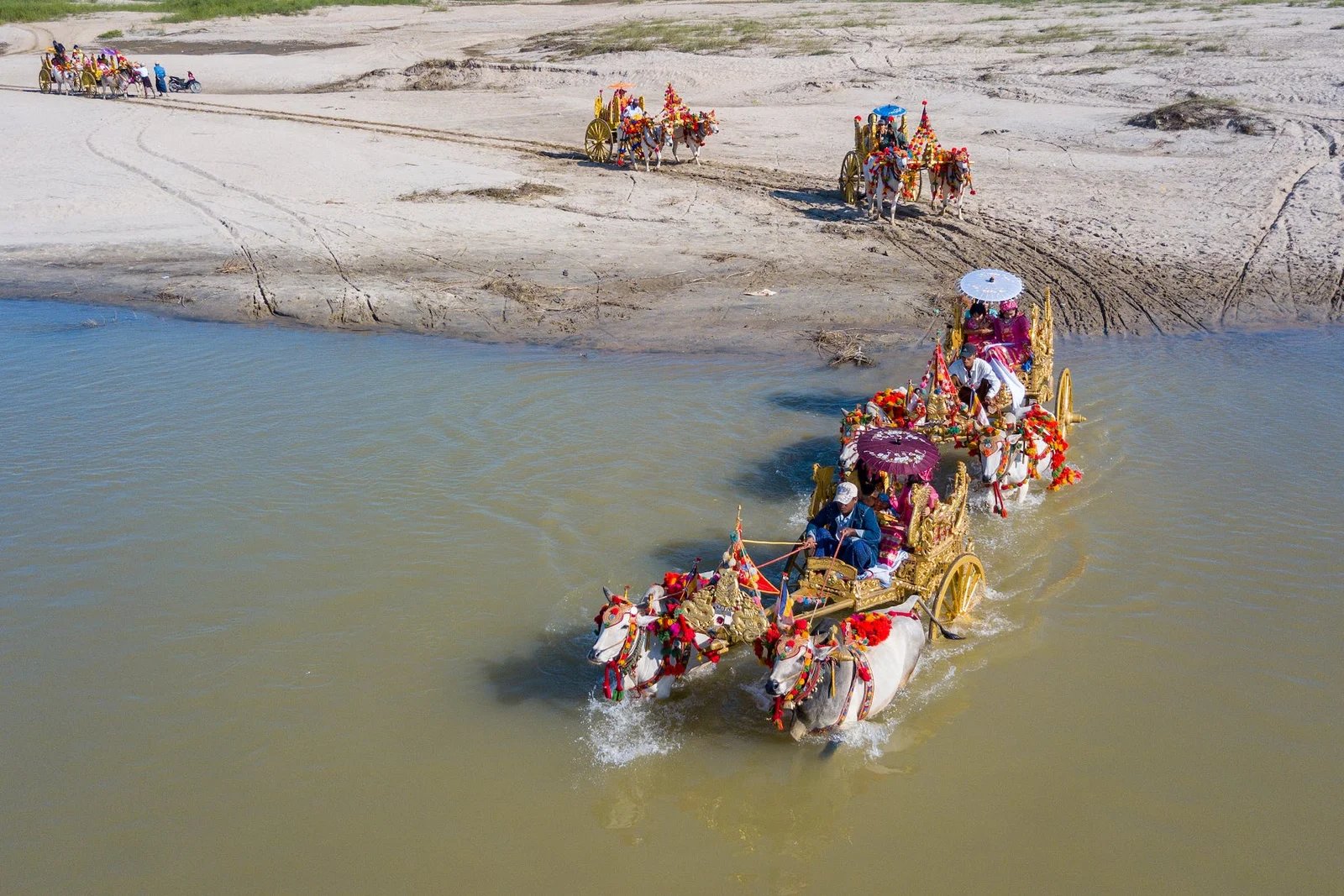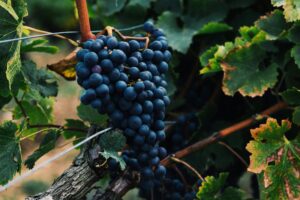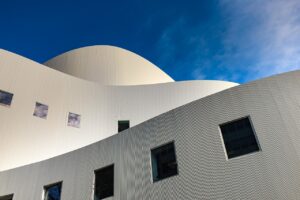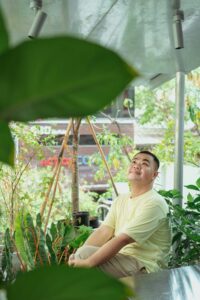
Thingyan Water Festival Yangon Myanmar
Welcome to the vibrant city of Yangon, Myanmar, where the Thingyan Water Festival takes center stage! This annual celebration is a time-honored tradition that brings people from all walks of life together to celebrate the New Year in a unique and exhilarating way.
Known as the “Water Festival,” Thingyan is a joyous occasion filled with laughter, music, and, of course, water. In this blog, we will delve into the origins, customs, and highlights of the Thingyan Water Festival in Yangon, giving you a firsthand glimpse into this extraordinary cultural event.
So grab your water guns, put on your waterproof attire, and get ready to dive into the spirited world of Thingyan in Yangon, Myanmar!
Facts About The Thingyan Water Festival
| Facts | Explanation |
|---|---|
| Name of the Festival | Thingyan Water Festival |
| Type of Festival | Water Festival |
| City of Origin | Yangon (formerly known as Rangoon), Myanmar (formerly known as Burma) |
| Festival Etymology | The word “Thingyan” is derived from the Sanskrit word “Sankranti,” which means the transition of the sun from one zodiac sign to another. |
| Date when celebrated | April 13th to April 16th |
| Founder of the Festival | King Anawrahta of the Pagan Kingdom in the 11th century AD. |
| Brief History of the Festival | The Thingyan Water Festival is a traditional New Year celebration in Myanmar. It is a time of cleansing and renewal, where people splash water on each other to wash away the previous year’s misfortunes and sins. The festival has its roots in Hinduism and Buddhism and is celebrated with great enthusiasm throughout the country. The water symbolizes purification, and the splashing of water is seen as a way to start the New Year fresh. It is also a time for family reunions, cultural performances, and paying respects to elders and ancestors. Over the years, the festival has evolved to include music, dance, and other forms of entertainment. |
| Brief History of the City | Yangon, formerly known as Rangoon, is the largest city in Myanmar and was the country’s capital until 2006. It has a rich history dating back over 2,000 years. The city was founded by King Alaungpaya in 1755 and served as an important trading port during British colonial rule. Yangon showcases a mix of colonial-era architecture, traditional Buddhist pagodas, and modern skyscrapers. Despite its rapid development, it has managed to preserve its cultural heritage and historic charm. Today, Yangon is a vibrant city known for its bustling markets, street food stalls, and friendly people. |
| Ethnic Information | Yangon is home to various ethnic groups, including the Bamar (the majority ethnic group in Myanmar), Chin, Kachin, Karen, Mon, Rakhine, Shan, and others. Each group contributes to the city’s diverse cultural fabric, making it an interesting melting pot of traditions and customs. |
| Location in the Country | Yangon is located in the southern part of Myanmar, along the eastern bank of the Yangon River. It is situated about 30 kilometers (18 miles) inland from the Andaman Sea. |
| How to Reach the City | Yangon can be reached by international flights to Yangon International Airport (RGN). Domestic flights, trains, and buses connect Yangon with other major cities in Myanmar. |
| Nearby Cities or Towns | 1. Bago – 80 km (50 miles) 2. Thanlyin – 22 km (14 miles) 3. Twante – 24 km (15 miles) 4. Hlegu – 35 km (22 miles) 5. Dala – Accessed by ferry from downtown Yangon |
| Google Map Link | Yangon City Location |
| Festival Main Events | – Water throwing and splashing – Traditional dance performances – Music concerts – Food stalls offering traditional delicacies – Cultural parades – Religious ceremonies and rituals – Water-spraying elephants parade (specific to Yangon) – Traditional boat races (specific to certain areas) |
| Other Famous Tourist Attractions in the City | 1. Shwedagon Pagoda – A magnificent golden pagoda and one of Myanmar’s most sacred religious sites. 2. Sule Pagoda – A historic landmark located in the heart of downtown Yangon. 3. Bogyoke Aung San Market – A bustling market known for its variety of local handicrafts, gems, and jewelry. 4. Inya Lake – A serene lake offering opportunities for boating and relaxation. 5. National Museum of Myanmar – Showcasing Myanmar’s rich cultural heritage through its exhibits. |
| Famous Food Dishes of the City | 1. Mohinga – A traditional Burmese rice noodle soup considered Myanmar’s national dish. 2. Tea Leaf Salad (Lahpet Thoke) – A unique salad made with fermented tea leaves, nuts, and various ingredients. 3. Shan Noodles – Rice noodles served with meat or vegetarian toppings in a flavorful broth. 4. Burmese Curry – A spicy and aromatic curry made with various meats or vegetables. 5. Mont Lone Yay Paw – A popular dessert made with jaggery and shredded coconut wrapped in glutinous rice. |
| Landmarks in the City | 1. Yangon Central Railway Station – A historic train station with colonial architecture. 2. Botataung Pagoda – A riverside pagoda housing sacred relics of Gautama Buddha. 3. Yangon City Hall – An iconic colonial-era building in downtown Yangon. 4. St. Mary’s Cathedral – The largest Catholic church in Myanmar. 5. Botahtaung Jetty – A popular riverfront area for leisure activities and boat rides along the Yangon River. |
| Related Festivals | – Songkran Water Festival in Thailand – Choul Chnam Thmey (Khmer New Year) in Cambodia – Pii Mai Lao (Lao New Year) in Laos – Baisakhi Festival in India – Pohela Boishakh (Bengali New Year) in Bangladesh – Aluth Avurudu (Sinhala and Tamil New Year) in Sri Lanka – Thingyan Festival in Mandalay, Nay Pyi Taw, and other cities across Myanmar |
Overview of Thingyan Water Festival
Delving into the heart of Myanmar during mid-April, one finds streets awash with joyous celebration, marking the Thingyan Festival in Myanmar, a time of communal merriment and spiritual cleansing.
But what is the Water Festival in Myanmar? It is a vibrant tapestry of tradition, where water symbolizes the washing away of the past year’s sins, paving the way for a fresh lunar year.
The history of the Water Festival in Myanmar immerses us in a lineage of Buddhist rituals and royal customs, evolving from royal court events to widespread public festivities, entwining ancient lore with the gaiety of splashing water.
History of water festival in Myanmar
As the previous section fades, imagine the spirited laughter and gleeful shouts that echo through the streets during Myanmar’s most exuberant celebration. For centuries, the annual water festival, known locally as Thingyan, has soaked the land in both water and tradition.
This jubilant event grips the nation, marking the Burmese New Year with origins deeply rooted in Buddhist beliefs. Legend has it that the water symbolically washes away the sins and impurities of the old year, paving the way for a fresh and clean start.
What is a water festival in Myanmar, if not a vibrant tapestry of culture and history? Each droplet carries the essence of Myanmar’s rich past, a historical saga that dances through the ages, inviting every soul to partake in its time-honored ritual.
Preparations for the Festival
As the spirited water splashes of Thingyan signal the washing away of the old, preparations for the festival embrace the promise of renewal with equal fervor. Villages and cities alike burst into a kaleidoscope of activity, their streets humming with anticipation. Stalls festooned with colorful decorations begin to dot the thoroughfares, while the air fills with the tantalizing aroma of traditional delicacies being prepared.
Artisans craft intricate water-throwing devices, from simple bowls to elaborate, high-powered squirt guns, each designed to drench revelers in the spirit of the celebration. Stages for music and dance performances are erected, where the rhythm of drums will soon resonate, and dancers will whirl in a blur of vibrant costumes.
Homes are meticulously cleaned, and altars are adorned with fresh flowers and offerings, setting the stage for a period of goodwill and merry-making. Through these collective efforts, a canvas of cultural exuberance is painted, eagerly awaiting the first drop of water to inaugurate the joyous pandemonium of Thingyan.
Celebrations During the Festival
As the preparations reach their crescendo, the festival blooms into a spectacle of joyous revelry. With the first light of dawn, streets transform into a canvas of vibrant colors and laughter, heralding the start of celebrations. Aromas of festive delicacies mingle in the air with the scents of fresh blossoms, enticing the senses and promising delight.
Water, in its most playful form, becomes the star of the show as splashes and sprays weave through the crowd, symbolizing purification and renewal.
Children, with cheeks glowing from excitement, dart through the throngs with water pistols in hand, their giggles as infectious as the melodies that float from every corner.
Elders, their eyes twinkling with mirth, watch from their doorsteps, occasionally dousing passersby with good-natured spritzes. Stalls adorned with handcrafted goods and sweet treats line the pathways, inviting a dance of commerce and camaraderie.
Attire for the Festival
As the jubilant echoes of celebration ripple through the air, thoughts naturally meander to the vibrant tapestry of attire that adorns the festival-goers. A kaleidoscope of colors bursts to life as each dons traditional garments that speak volumes of cultural pride and joyous spirit.
Women swirl in htamains, their skirts a whirlwind of intricate patterns and hues, while the men complement in their crisp, smart taik-pons, embodying the grace and poise of the festivities.
The young, with cheeks painted in the delicate swirls of thanaka, add a playful touch to their outfits with flower garlands that dance in the gentle breeze. As the sun casts its golden glow, the shimmering fabrics catch the light, creating a dazzling display that rivals the sparkling surface of the surrounding waters.
Each element of their attire, from the ornate headdresses to the jingling bangles, weaves an enchanting narrative of celebration, community, and shared heritage that is as rich and flowing as the festival itself.
Participating in the Festival
Adorned in radiant attire, festival-goers are not merely spectators but the pulsating heart of the celebration, each person a vibrant thread woven into the tapestry of festivity. Amidst the laughter and music, participation becomes the melody that shapes the day’s joyous rhythm.
Stalls adorned with colorful decorations beckon, offering an array of traditional games and activities that ignite the senses and foster community spirit.
The air is filled with the scent of mouthwatering delicacies, each bite a revelation of cultural heritage and culinary artistry. Children, their faces painted with whimsical designs, dart through the crowds, their giggles as infectious as the rhythm of the drums that echo in the distance.
Elders share stories, their eyes twinkling with wisdom and mirth, guiding eager listeners through ancient customs and traditions.
As the sun dips lower, casting a golden glow, the energy crescendos into a harmonious blend of old and new, a reminder that to partake is to truly understand the essence of the festival’s jubilance.
After the Festival
As the last droplets of the festival’s joy trickle away, the air buzzes with a warmth that speaks of shared memories and new friendships. The streets, once a playground for the spirited dance of water and laughter, now whisper tales of unity and cultural splendor.
Festooned with colorful remnants, the town seems to bask in the afterglow of the celebration, its every corner echoing the merriment that danced under the sun’s approving gaze.
Children, their energy undiminished, scamper around, collecting the last tokens of the day, a splash of color here, a forgotten squirt gun there. Vendors slowly pack away their wares, their faces etched with the satisfaction of the feast they provided to the jovial crowds.
Conclusion
As the vibrant splashes of water settle and the joyful echoes of laughter fade into memories, the Thingyan Water Festival leaves behind a canvas of unity and renewal in Yangon. The streets, once bustling with energetic festivities, return to their everyday rhythm, carrying the spirit of communal harmony and fresh beginnings within their heartbeat.
In the aftermath, the air hums with a shared sense of contentment, as participants hold dear the moments of merriment and cultural homage. The festival not only marks a time of exuberant celebration but also weaves a tapestry of tradition that blankets the city, year after year, in an exquisite display of Myanmar’s heritage and communal jubilation.
@meta: Discover the vibrant Thingyan Water Festival in Yangon, Myanmar – a celebration of splashes, smiles, and cultural splendor that heralds the Burmese New Year!




